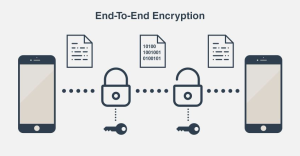Discover how Invisible Mobile Security transforms user experience by protecting apps silently, using behavioral biometrics, zero-trust frameworks, and AI-driven defenses without friction.

Introduction: Invisible Mobile Security as a Silent Guardian
Invisible Mobile Security ensures that apps protect users seamlessly, without friction or interruptions. Users feel trust instinctively, even if the security system is never visible.
-
Introduction: Invisible Mobile Security as a Silent Guardian
-
The Paradigm Shift: From Visible Security to Invisible Confidence
-
UX-Friendly Security: Designing Effortless Trust
-
Silent Defense Frameworks in Invisible Mobile Security
-
Device-Level Cryptography
-
On-Device Threat Detection
-
Runtime App Self-Protection (RASP)
-
API-Shielded Communication
-
Secure Boot & Trust Chain Validation
-
-
Behavioral Biometrics: Identity Beyond Passwords
-
Design Philosophy: Security Without Sacrifice
-
Zero-Trust, Zero-Friction in Mobile Security
-
The Future of Invisible Mobile Security
-
AI Security Companions
-
Predictive Defense Neural Engines
-
Passwordless Authentication
-
Device-Mesh Trust Graphs
-
Self-Healing Application Armor
-
Cognitive Security UX
-
-
Conclusion: The Luxury of Invisible Protection
-
Executive Summary (SEO-Ready)
In the modern digital ecosystem, security is no longer a competitive advantage — it is a living expectation. Yet the most successful mobile applications are not those that simply claim to be secure, but those that embody security as a silent force — a presence users never see but always rely on.
True innovation in mobile security is not measured by how many authentication challenges it throws at the user. It is measured by how quietly, gracefully, and intelligently it protects them.
Security, at its highest form, disappears into experience.
The user feels only confidence — never friction, never delay, never fear.
This is the art of invisible defense.
Security that sits beneath the surface.
Security that behaves like intuition, not intrusion.
Security that protects the user — without ever reminding them they need protection.
Today’s most trusted apps are powered by UX-friendly security, silent defense frameworks, and behavioral biometric intelligence that reshape mobile protection into a frictionless, instinctive, intelligent shield.
The Paradigm Shift: From Visible Security to Invisible Confidence
Historically, mobile security was synonymous with:
- Password screens
- Re-authentication prompts
- Firewalls and warnings
- Invasive alerts
- Authentication rituals that broke flow
These models worked — until user expectations evolved.
In a world of one-tap commerce, face-unlock convenience, and instant messaging economies, security must operate at the speed of trust and the quietness of intuition.
Modern security now embraces a new philosophy:
| Old Security | Invisible Security |
| Friction and interruption | Freedom and fluidity |
| Reactive defense | Proactive, predictive intelligence |
| Authentication events | Continuous identity presence |
| Password-centric trust | Signal-driven trust |
| Software firewalls | Neural-pattern defense |
| User effort | Machine-driven protection |
| Security as a barrier | Security as design elegance |
When security interrupts, it weakens trust.
When it disappears, it strengthens loyalty.
Invisible security is not lighter security.
It is deeper, smarter, and more human-aware.
UX-Friendly Security: The Architecture of Effortless Trust

Security that disturbs the experience is not security — it is friction disguised as caution. UX-friendly security designs protection into the flow, not around it.
Principles of UX-Safe Protection
Authenticate without demanding interaction
Biometrics over passwords. Passive checks over prompts.
Predict user intent, not force confirmation
Smart trust scores vs. repetitive identity challenges.
Design clarity, not paranoia
Transparency without fear-driven UI.
Reward trust with simplicity
Recognized devices = fewer interruptions.
Graceful fallback
Biometrics → Device PIN → Cloud identity only when needed.
Security should feel like oxygen — present, life-enabling, and never noticed.
Example Experiences
- Open banking apps ensuring secure transactions without forcing repetitive logins
- Health apps verifying identity silently through device cryptography
- E-commerce apps allowing biometric checkout instead of typing credentials
Invisible security systems don’t ask:
“Prove you are you.”
They already know.
Silent Defense Frameworks: Security You Never See
Silent defenses operate beneath interface and above threat — a hidden immune system conducting continuous surveillance, risk scoring, anomaly detection, and integrity validation.
Architectural Pillars of Silent Defense
Device-Level Cryptography
Secure enclave and key-store isolation
Hardware-rooted trust anchors
On-Device Threat Detection
Detect root/jailbreak attempts
Monitor unauthorized system modifications
Block unknown code execution
Runtime App Self-Protection (RASP)
Apps that fortify themselves dynamically
In-execution attack monitoring
Memory tampering alerts and lockdown
API-Shielded Communication
Certificate pinning
Encrypted request channels
Tokenized session security
Secure Boot & Trust Chain Validation
From hardware to OS to app layer,
every stage verified silently.
If the chain breaks, the app defends before damage begins.
These invisible layers create an experience where attackers face walls, while users feel none.
Behavioral Biometrics: Identity Beyond Passwords
Behavioral biometrics is the most elegant expression of invisible security.
Instead of asking users who they are, systems understand how they behave.
Signals Monitored
- Typing rhythm
- Touch pressure & motion
- Device handling patterns
- Navigation behavior
- Micro-movement signatures
- Swipe dynamics
- Typing cadence
- Gait & hold posture (wearables)
If behavior changes unpredictably, systems respond before breach.
Identity becomes the choreography of human interaction, not a string of characters.
It is intimate, adaptive, nearly impossible to replicate — and friction-free.
Design Philosophy: Security Without Sacrifice

Product designers today face a monumental responsibility:
Build systems that feel personal, private, fast, and secure — simultaneously.
This requires:
| Layer | Mission |
| Product UX | Never burden the user |
| Engineering | Security engineered from inception |
| Security Ops | Continuous threat orchestration |
| Data Science | Behavioral patterns, anomaly intelligence |
| Leadership | Vision for human-centric trust |
Invisible security succeeds when:
- The user feels safe, but not policed
- Trust becomes instinctive, not earned painfully
- Interaction remains fluid, uninterrupted
- Systems enforce resilience without visible force
Security becomes an aesthetic, not a warning.
Zero-Trust, Zero-Friction
Zero-trust does not mean zero comfort.
It means systems validate continuously without interrupting experience.
Trust is dynamic, not static
Identity is continuous, not episodic
Access adapts, not freezes
Continuous trust = continuous usability.
The Future of Invisible Mobile Security

What lies ahead?
AI Security Companions
Personal security models that evolve with user behavior.
Predictive Defense Neural Engines
Systems blocking threats before they form.
Passwordless Worlds
Biometrics + encrypted tokens = primary identity.
Device-Mesh Trust Graphs
Wearables, phones, laptops forming one trust identity fabric.
Self-Healing Application Armor
Apps rebuilding corrupted components autonomously.
Cognitive Security UX
Interfaces that communicate safety without exposing complexity.
In this future:
Security is not a line of defense.
It is the fabric of interaction.
Conclusion: The Luxury of Invisible Protection
Security is evolving from a barrier to a silent luxury — like oxygen, stability, or peace. When we design mobile apps that protect without imposing, we honor both technology and humanity.
The apps that will win the next decade are:
Invisible in protection
Intelligent in detection
Empathetic in experience
Relentless against threats
Effortless for users
Security becomes a promise fulfilled quietly, daily, unquestioningly.
When users do not feel security — they feel safe.
And safety is the most powerful form of loyalty.
Invisible. Intelligent. Indispensable.
That is the new frontier of mobile defense.
Executive Summary (SEO-Ready)
This article explored how invisible mobile security delivers frictionless trust, covering:
- UX-friendly protection models
- Silent defense frameworks & app immune systems
- Behavioral biometrics and continuous authentication
- Zero-trust without zero usability
- AI-powered proactive threat engines
- Future of passwordless security ecosystems
Core idea:
The greatest mobile security systems are not felt — only trusted.


